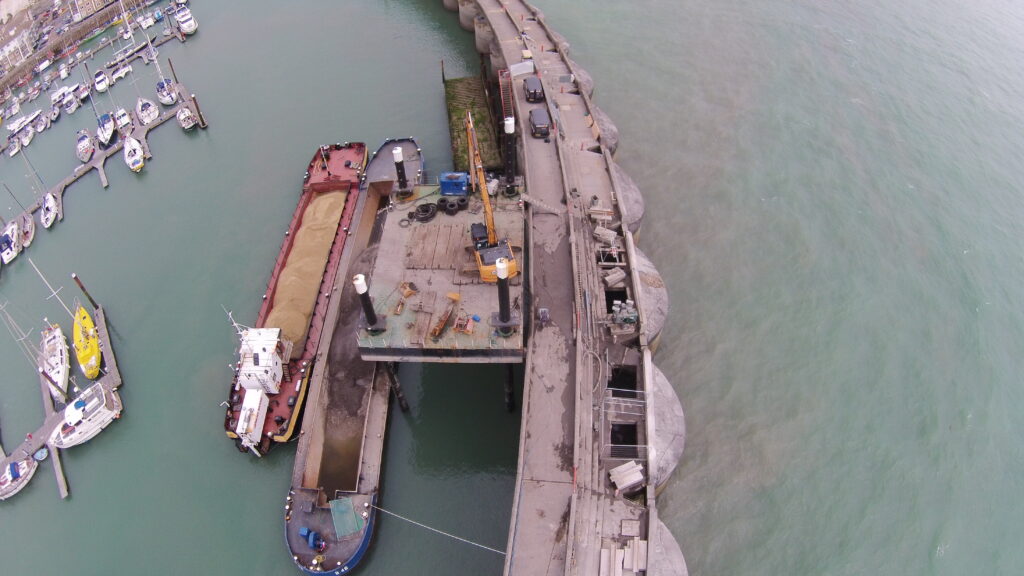The East and West breakwaters at Brighton Marina are constructed from 110 cylindrical reinforced concrete ‘caissons’. The breakwaters provide essential protection from waves for the entire marina and are ever more important due to rising sea levels and increasing storminess due to climate change.
Investigations into the long term effectiveness and durability of the breakwaters have been carried out, highlighting:
a) The cylindrical caissons forming the breakwaters are very efficient at dealing with wave loads. Waves are forced upwards in the vee shaped ‘cusp’ between each caisson. However, some caissons need additional weight to be stable against the greatest 1 in a 1000 year storm events.
b) The scour protection mattress at the seaward toe of the breakwater is important to prevent the caissons from being undermined. Yearly inspection and maintenance is required in order to avoid future problems.
c) Spalling, corrosion of exposed bars and other degradation is visible throughout the breakwater superstructure. The lower caisson walls have a medium to high risk of corrosion in the reinforcing steel in the concrete. Using Cathodic Protection to alleviate the corrosion has been trialled and developed. Whilst this was shown to be effective at stopping corrosion, more robust and cost effective solutions available are now being implemented.
d) The ‘superstructure’ roadway along the breakwaters allows access for pedestrians and for the yearly scour protection / maintenance works. Due to ‘pitting’ corrosion found in the roadway reinforcement on the West breakwater, this was propped from underneath in 2015 using a heavy duty system of painted and galvanised steel beams and circular columns. Now completed this allows construction vehicles up to 26 tonnes to use the roadway.
Schemes are now being implemented to fill caissons full of concrete. This provides the caissons with additional weight for stability and provides a monolithic internal structure in anticipation of the thin outer shell significantly degrading in future.
23No. caissons were filled with mass concrete in 2016 (9No. on the East and 14No. on the West). The caissons were originally partially filled with sand/ gravel ballast and these works utilised a combination of land-based and marine plant to extract this material, mix it into concrete on site and re-fill it into the caissons. This innovative approach to the works brought sustainability benefits by
reusing the large volumes of ballast materials that otherwise might have been dumped into the sea and reduced the need for construction vehicles on the road, minimising disruption within the marina.
Despite difficulties during the coronavirus pandemic, filling works to a further 12No. caissons have been completed in 2020. In this tranche of works, the contractor opted to use land-based plant to extract the caisson ballast and re-fill using conventional ready mixed concrete. This methodology used an innovative ‘bagwork’ structure inside the caisson to construct a 1.5m thick concrete ‘annulus’
around the inside of the existing caisson shell wall. This meant that concrete volumes could be reduced and the middle of the structure could be re-filled with the existing caisson ballast. This resulted in a minimum quantity of ballast material taken off site for re-use elsewhere.
Future works in 2021 and beyond will firstly include propping works to the Eastern breakwater cantilevered roadway, where corrosion of steel within the cantilevered section now means that this work should be carried out before significant degradation to the superstructure is observed and to ensure access for essential maintenance works is preserved. Secondly, further rounds of caisson filling works will be carried out to tackle the remaining 67No. caissons still requiring attention.

